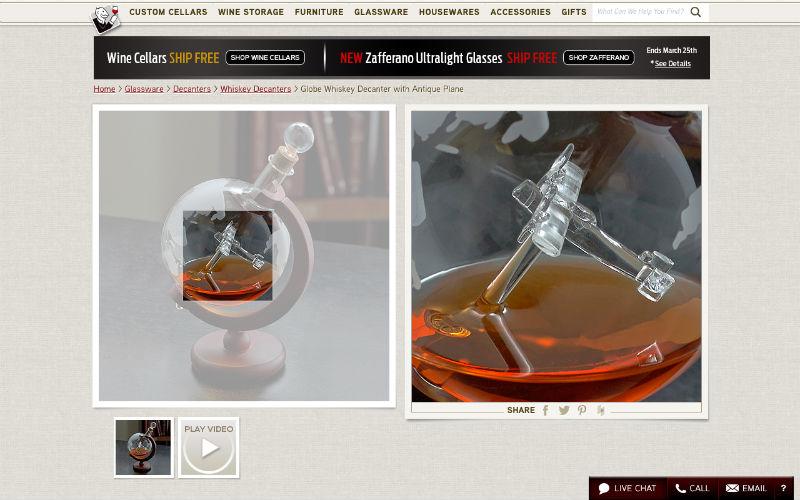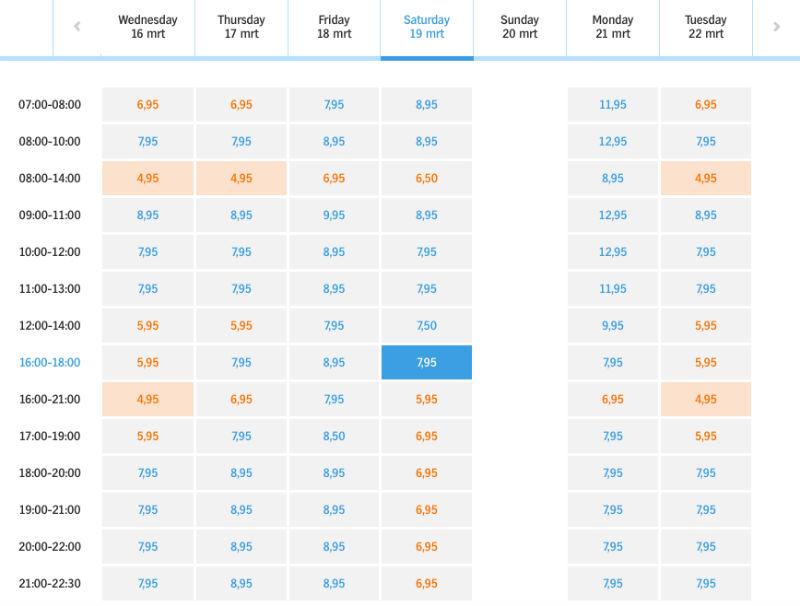A study by the Dutch home shopping association has revealed the disadvantages of online shopping compared to offline shopping. This article aims to provide solutions to eliminate those disadvantages.
The affiliated Dutch home store publishes the Home Shopping Market Monitor four times a year. In this report they provide insight into the Dutch B2C e-commerce market. The following question, among others, is answered: 'What do Dutch consumers see as disadvantages to online shopping?'. In this article we discuss most of the objections and give you examples of how these disadvantages can be eliminated or significantly reduced.
Can't see or feel the product
Even with the current level of technology, this is a disadvantage that unfortunately we cannot yet completely eliminate. Perhaps in the future 3D printers or holograms can partially solve this, but for now we will have to work around this.
Images with deep zoom
Videos of the product
Another way to help visitors get a more realistic view of the product they are considering purchasing is through videos. Especially when showing the product, they can help convince a potential customer of the benefits and show the product from a variety of angles.
Free shipping and returns
While this may not apply to all stores, it can certainly help with many of them. Clothing stores in particular can offer this service to remove this important objection to online shopping.
Samples
However, for some online stores none of the above solutions work very well. For example, furniture suppliers or websites that sell perfumes are both not helped by this. Such sites may be able to partially address their visitors' objections by offering to send samples of their products.
Shipping costs
The costs of getting the products to customers' homes are also consistently mentioned as a disadvantage. It's likely that shipping costs frustrate online shoppers so much because offline "shipping costs" (gas, parking, etc.) aren't taken into account when comparing online and offline shopping.

Remove all shipping costs
Although most organizations have to spend money to move their products, this doesn't necessarily mean that customers have to pay for it. After all, webshop owners must align their shipping policy with their strategic plan.
For example, a service-oriented company like Zappos may choose to offer free shipping and returns and absorb the costs associated with such a decision. On the other hand, a company that sells large, difficult-to-move furniture may want to charge some shipping costs to minimize the number of returned pieces.
Free shipping from € x
This can even serve as a double-edged knife when the tilt point is chosen just right. It can help to get visitors to spend a little more than they intended to buy, just to avoid paying shipping costs. It also prevents people who plan to place large orders from abandoning their purchase process due to (relatively small compared to their total purchase amount) shipping costs.
Free and non-binding 1 hour session?
Gain insight into your challenges surrounding CRO
Requirement to pay in advance
This may be more specifically related to the Dutch market, due to the low market share (~10%) of the credit cards we have. In countries where credit cards are more popular, you always pay 'afterwards', so this will probably feel less of a disadvantage.
Invoicing
A smart way to mimic the offline payment system is to simply let people pay by invoice after receiving the item at their home. However, this can create complicated situations for online retailers if the customer cannot or does not want to receive their invoices after receiving the products. All in all, it seems like supporting major credit cards is a good way to solve this problem.
Uncertainty about reputation
It can be difficult for online stores to gain the trust of their visitors, especially if they are not well-known brands. However, the online world offers some unique advantages over offline in showing why a brand can be worth trusting.
Testimonials, reviews, case studies
All of these forms can show current visitors how previous customers have experienced purchasing from this specific website. More specifically, the reviews provide a more quantitative measure, with testimonials, reviews and case studies providing a qualitative assessment.
No / little influence on the delivery time
Let them choose their own delivery moment
The image shows how Albert Heijn lets customers choose the delivery time of their purchased products. Unfortunately, such detailed control over delivery times is not possible for all online stores. But even a variation that lets visitors choose a time of day (morning, afternoon, evening) might help fit deliveries into busy schedules.
Can't immediately take the product home with me
Of all the objections, this one is perhaps the most difficult to replicate in the offline world. Neither click-and-collect, drone delivery, or even 3D printing get the immediate 'product in hand' feeling that offline shopping delivers. Although teleportation may provide solutions in the future, for now we will have to look for ways around this problem.
Other forms of immediate gratification
The offline experience has the advantage of providing shoppers with instant gratification, as there is no delay between purchasing and holding the product. In order to be able to offer this instant satisfaction online, online retailers can distribute free items after purchase. For example, a related e-book or a coupon for the next purchase.
Uncertainty about delivery times
This is closely aligned with the perceived lack of impact on delivery time. Also, the wide range that is usually offered as a delivery time (for example between 8 a.m. and 9:30 p.m.) does not help.
Send an sms
To keep the customer informed of the exact delivery time, you can consider sending an (automated) text message with the specific delivery time. This way, customers feel like they are in control of the delivery, while at the same time reducing the risk of no one being home when the package is delivered.
Lack of personal contact
Although real personal contact is unfortunately not possible, you can try to get as close to this visitor as possible.
Live chat
This currently offers the best alternative to an offline store employee. This allows you to connect directly with your visitors and provide them with answers to questions directly, instead of making them wait for a response to their customer support email. With some extra intelligence, automated chatbots like Ikea's Ask Anna could serve as online store assistants.
Conclusion
Many online stores are working on ways to beat the competition online. However, there is a lot to be gained from getting customers to buy online from every site. By implementing some of the tips described above, the main objections to online shopping can be overcome.







